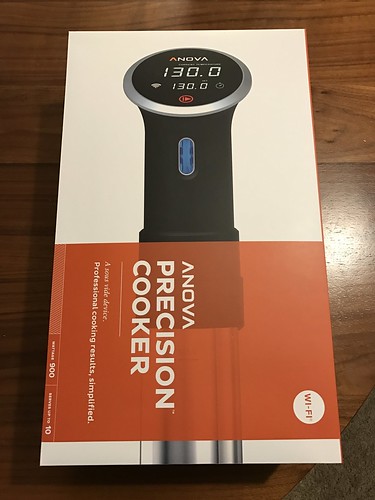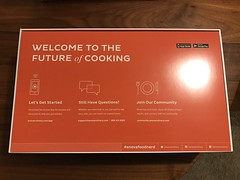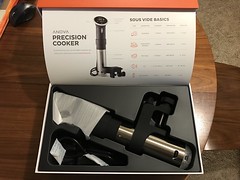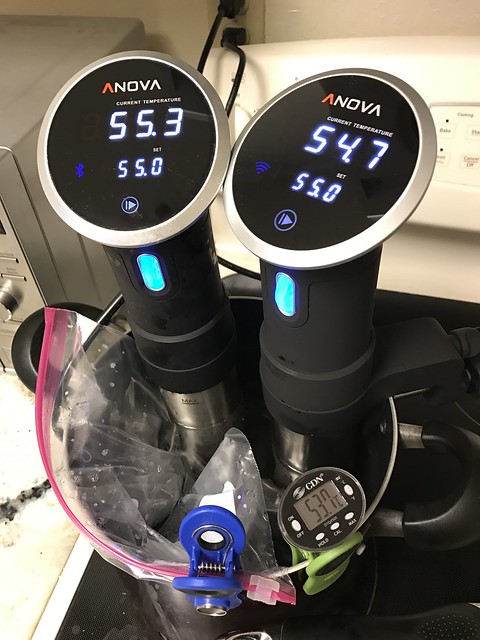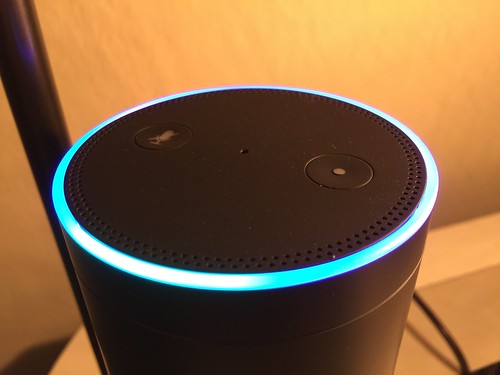I was one of the backers of Anova’s Bluetooth precision cooker when it was on Kickstarter. It was useful and reliable. I started doing a lot of sous vide after I got it (because I really like meat and seafood). When their Wi-Fi version came out, I really want one. And finally, it’s on discount so I bought one.
The box looks nicer and bigger than the tube that came with the Bluetooth version. There are more friendly informations in it to help you get started. Overall, those are useful for new customers but are meaningless to me. I would just install the app and start cooking.
The first problem I ran into is it couldn’t connect to my Wi-Fi. I read through their troubleshooting for a few times and wondered what was wrong. I thought maybe because I had 5GHz network sharing the same SSID as 2.4GHz network, but I couldn’t turn it off because it’s Eero. What else could be wrong? Anova said Wi-Fi password should be between 8 and 18 characters. Mine is definitely much longer than that. I changed the password and it worked.
Changing Wi-Fi password isn’t free though. I have other smart things connected to my Wi-Fi, for example my Amazon Echo. After changing the Wi-Fi password, I have to update all these devices. None of them have password length limit. Anova is the first one that has such weird restriction.
Naturally my next step was to compare it with the Bluetooth version. They look almost exactly the same. You can only tell the difference by looking at the max/min water level marker. Their temperature readings were also different, so I got to run calibration.
When I received my Bluetooth version from Kickstarter, Anova said the first batch was not correctly calibrated. They said we could ship it back for calibration or we could go through ice bath to calibrate by ourselves. I was too lazy to do either one, so I expected it to be slightly off.
Now they were different, and they were both different from my thermometer, I wanted to calibrate. I didn’t know which one to trust, so I chose to use my thermometer as standard. (I’m still too lazy to do ice bath, because I don’t keep ice in my freezer.) I used their apps to adjust the offsets. In the end they were within 0.1 degree difference and I was happy with that.
Overall I like the Wi-Fi version, even though I haven’t had a chance to use it through Wi-Fi yet. The reason is I don’t cook at workdays, so it’s not common for me to start cooking while away. For food safety reason, I should keep the food in ice bath before starting cooking from remote. That’s another hard to satisfy requirement.
